After Putting in Encryption Key It Says That the Key Was Accepted but Then Makes You Put It in Again
Utilize FileVault to encrypt the startup disk on your Mac
FileVault full-disk encryption (FileVault 2) uses XTS-AES-128 encryption with a 256-fleck cardinal to help prevent unauthorized admission to the data on your startup disk.
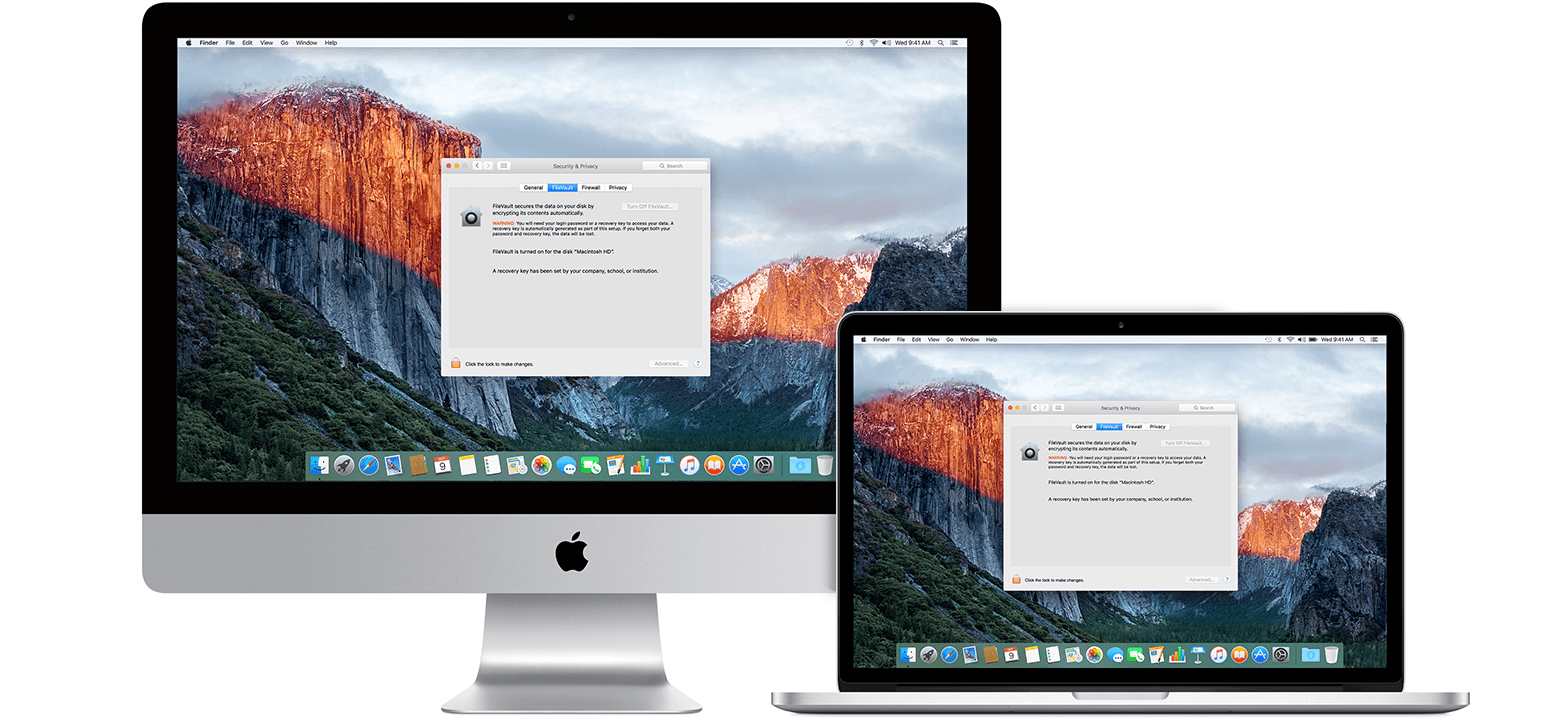
Turn on and set up FileVault
FileVault ii is available in OS 10 King of beasts or afterwards. When FileVault is turned on, your Mac always requires that yous log in with your account countersign.
- Cull Apple bill of fare () > Organization Preferences, and so click Security & Privacy.
- Click the FileVault tab.
- Click
 , then enter an ambassador proper name and password.
, then enter an ambassador proper name and password. - Click Turn On FileVault.
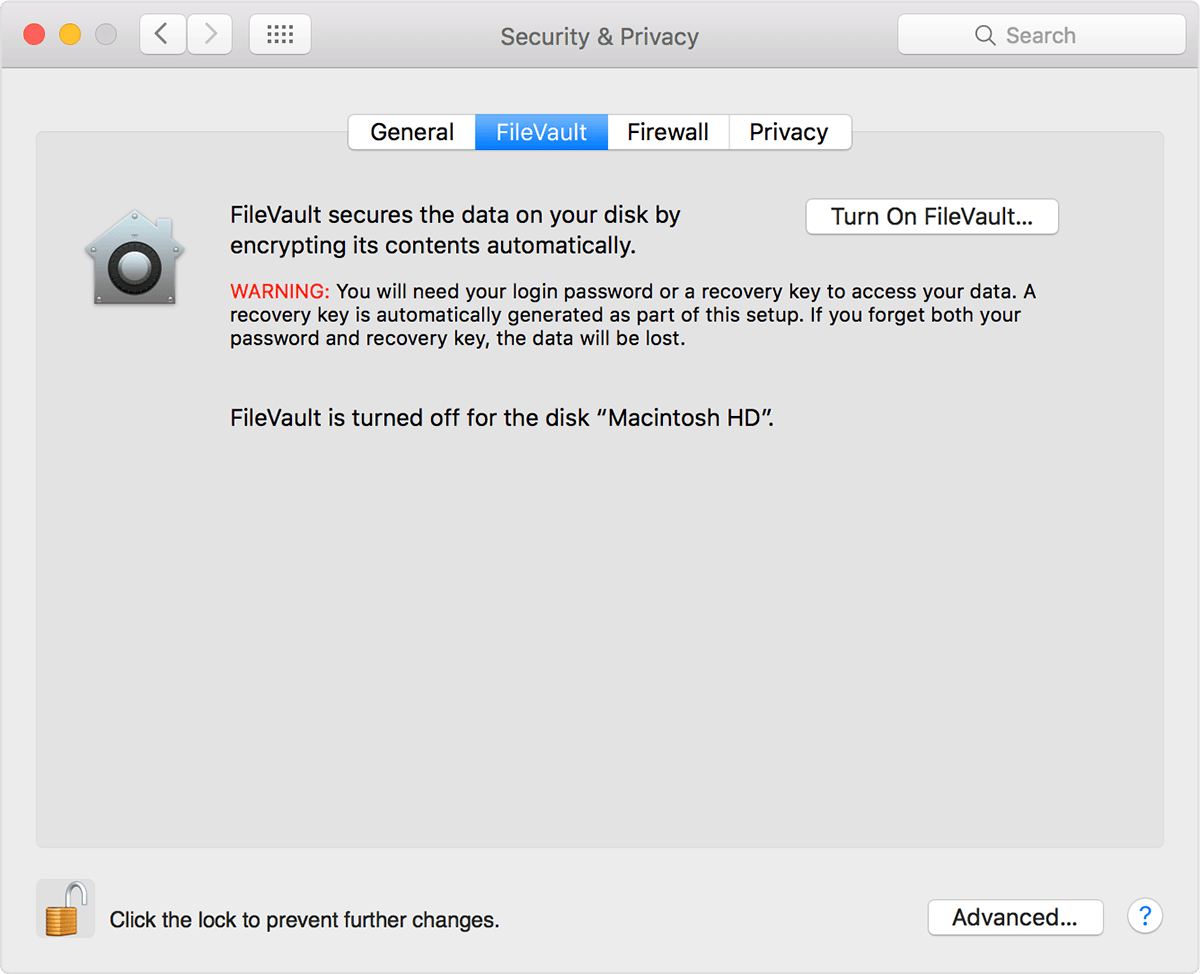
If other users have accounts on your Mac, you might see a bulletin that each user must type in their countersign earlier they will exist able to unlock the deejay. For each user, click the Enable User button and enter the user's password. User accounts that you add subsequently turning on FileVault are automatically enabled.
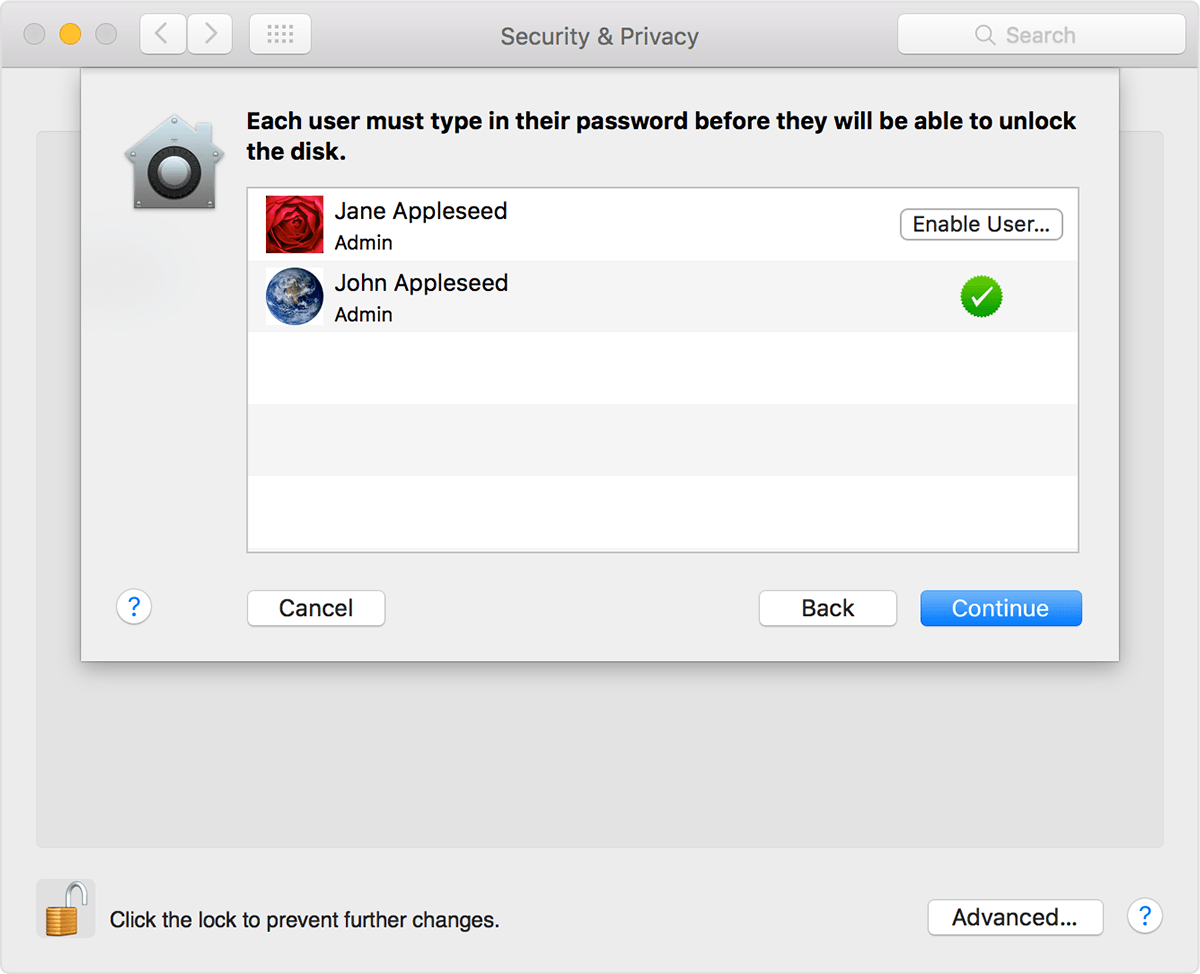
Choose how you want to exist able to unlock your deejay and reset your password, in case yous ever forget your countersign:
- If yous're using OS X Yosemite or after, yous can cull to use your iCloud business relationship to unlock your disk and reset your countersign.*
- If you're using Bone 10 Mavericks, yous can choose to store a FileVault recovery fundamental with Apple by providing the questions and answers to three security questions. Choose answers that you're sure to remember.*
- If you don't want to use iCloud FileVault recovery, you can create a local recovery key. Keep the letters and numbers of the key somewhere safety—other than on your encrypted startup disk.
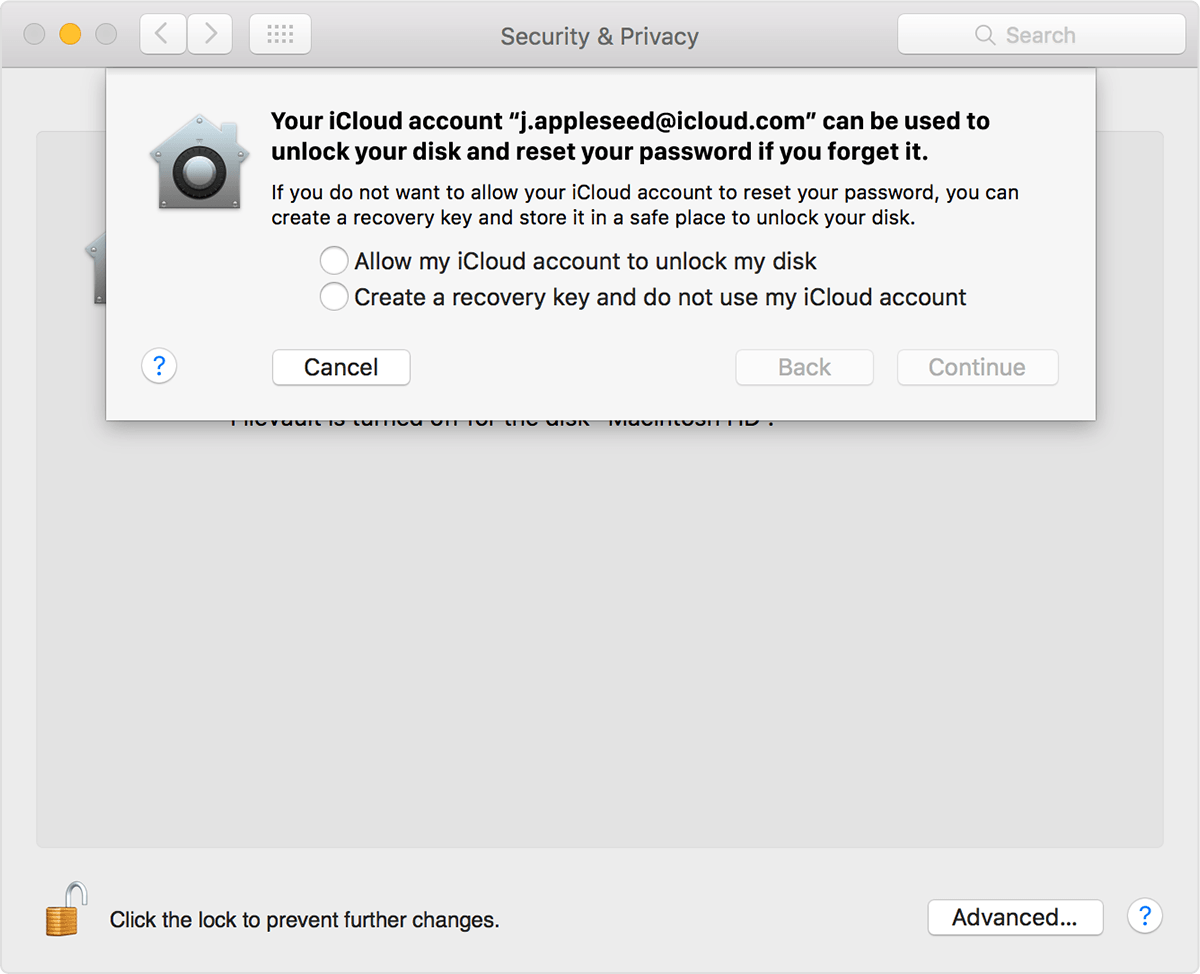
If yous lose both your account password and your FileVault recovery key, you won't exist able to log in to your Mac or admission the information on your startup disk.
Encryption occurs in the background every bit you use your Mac, and only while your Mac is awake and plugged in to Air conditioning power. You tin can check progress in the FileVault section of Security & Privacy preferences. Any new files that y'all create are automatically encrypted as they are saved to your startup disk.
When FileVault setup is consummate and you restart your Mac, you will use your account countersign to unlock your deejay and allow your Mac to finish starting up. FileVault requires that you log in every time your Mac starts up, and no account is permitted to log in automatically.
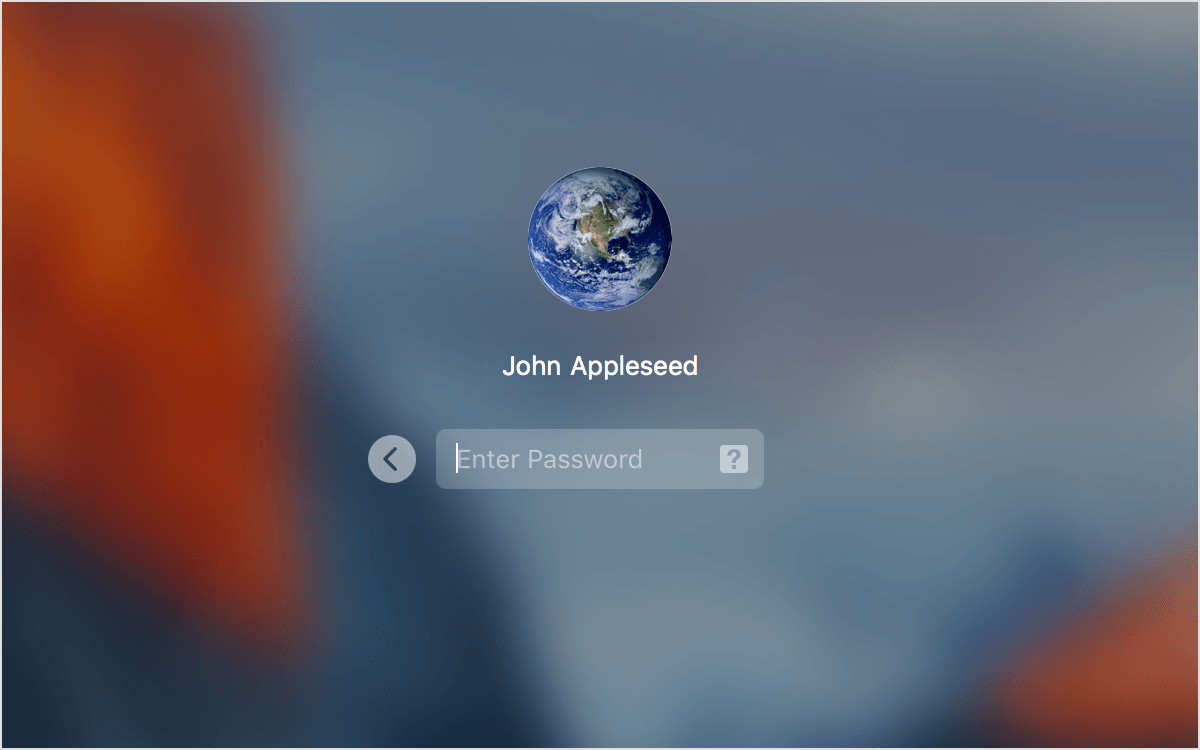

Reset your password or modify your FileVault recovery primal
If you forget your business relationship password or it doesn't work, you might be able to reset your password.
If you desire to change the recovery key used to encrypt your startup deejay, plow off FileVault in Security & Privacy preferences. Y'all tin can and so plow it on again to generate a new key and disable all older keys.

Turn off FileVault
If you no longer want to encrypt your startup disk, y'all can turn off FileVault:
- Choose Apple tree menu > System Preferences, so click Security & Privacy.
- Click the FileVault tab.
- Click
 , and then enter an administrator name and countersign.
, and then enter an administrator name and countersign. - Click Turn Off FileVault.
Decryption occurs in the background as you use your Mac, and only while your Mac is awake and plugged in to AC power. You can cheque progress in the FileVault section of Security & Privacy preferences.

Learn more
- Learn how to create and deploy a FileVault recovery key for Mac computers in your company, school, or other establishment.
- If you lot're using FileVault in Mac Os Ten Snow Leopard, yous can upgrade to FileVault 2 past upgrading to Os Ten King of beasts or later. Subsequently upgrading OS Ten, open FileVault preferences and follow the onscreen instructions to upgrade FileVault.
- RAID partitions or not-standard Boot Military camp partitions on the startup bulldoze might forbid OS 10 from installing a local Recovery Arrangement. Without a Recovery Organization, FileVault won't encrypt your startup bulldoze. Learn more.

* If you shop your recovery key with Apple or your iCloud account, at that place'due south no guarantee that Apple tree will exist able to give you lot the cardinal if yous lose or forget it. Non all languages and regions are serviced past AppleCare or iCloud, and not allAppleCare-serviced regions offer support in every linguistic communication. If yougear up your Mac for a language that AppleCare doesn't support, and then plough on FileVault and store your key with Apple (Bone X Mavericks merely), your security questions and answers could be in a linguistic communication that AppleCare doesn't support.
Published Engagement:
kerbysupprionly1936.blogspot.com
Source: https://support.apple.com/en-us/HT204837
0 Response to "After Putting in Encryption Key It Says That the Key Was Accepted but Then Makes You Put It in Again"
Post a Comment